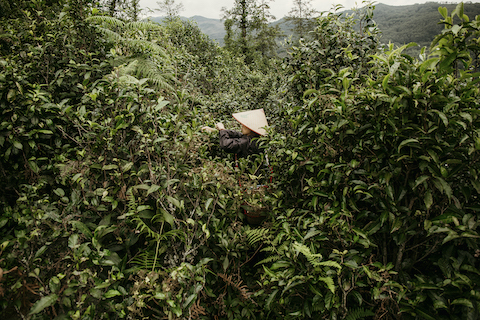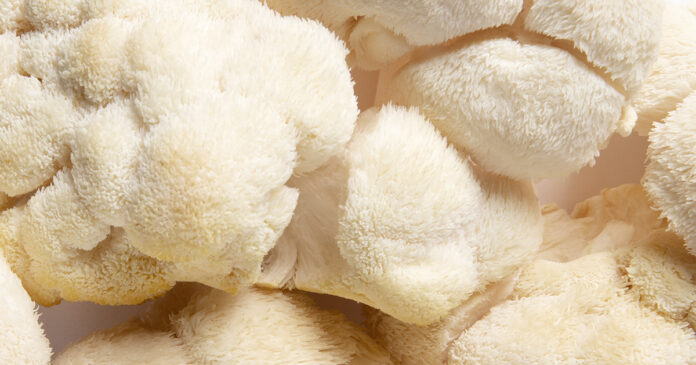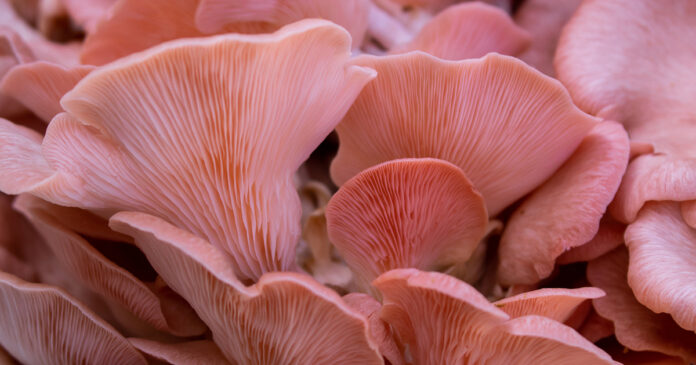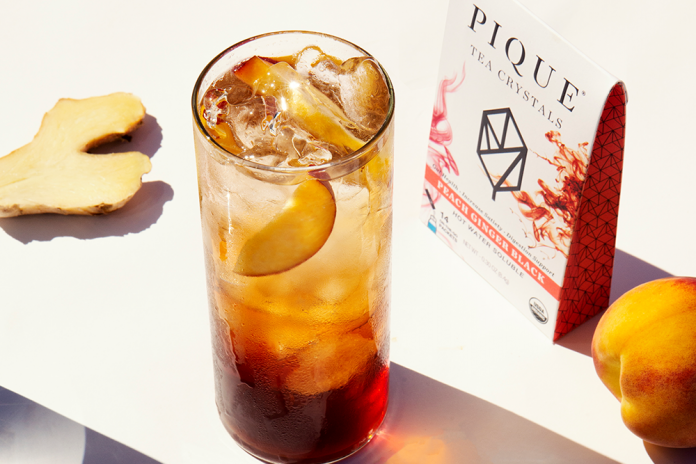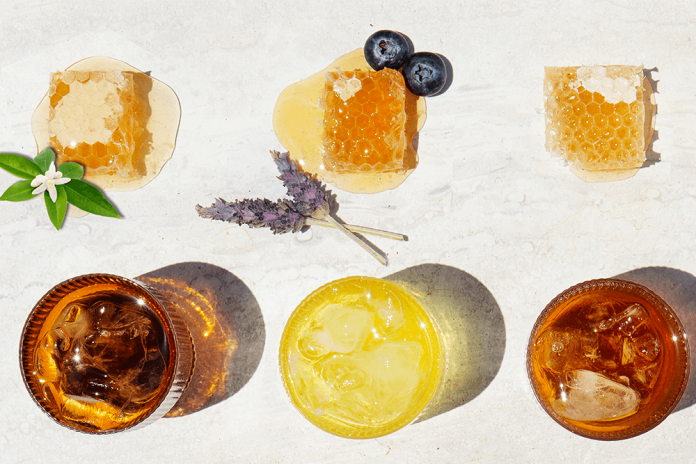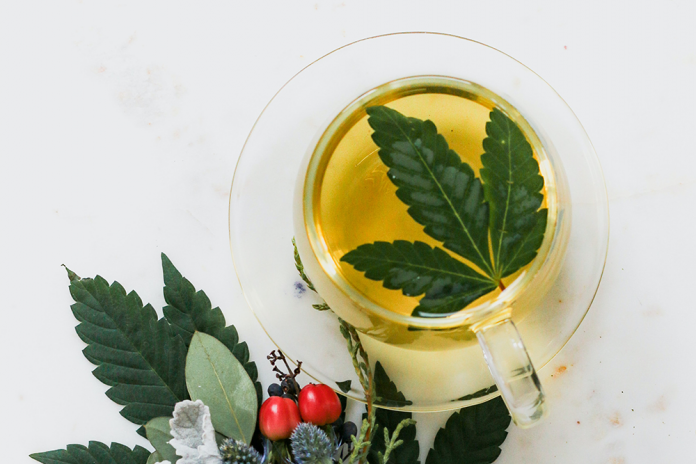Have you expanded your tea horizons to include drinking pu’er fermented tea? Maybe you’re curious but haven’t quite made your first purchase yet…
If you’ve read our guide to pu’er tea, you already know why this rare, fermented tea is such a cult favorite, and why its prebiotic properties have made it a staple of good gut health in the East for centuries.
Now, we want to make sure you’re fully informed to know how to source the highest-quality pu’er tea leaves before you give it a shot.
Below, you’ll learn everything you need to find the best pu’er tea for your tastes. After all, this complex aged tea is unlike any other tea on the market.
Even the spelling of its name confuses people.
Pu’er vs. Pu-erh Tea: What’s the Difference?
When it comes to pu’er tea, you may notice that the spelling is often different during your research, shopping, and throughout this article.
So you’ll see pu’er in some places and pu-erh in others.
Both spellings of the name refer to the same type of tea, which is why we’re using them interchangeably.
So what’s the difference?
It’s believed that the spelling change took place due to a difference between cultures. Experts think adding the hyphen made it easier for Westerners to pronounce.
To this day, you’ll see many variations of the spelling, but they all point back to the same type of rare Chinese tea and fermentation process.
What Does Pu’er Tea Taste Like?
Pu erh tea is a type of tea comes from the tea plant Camellia Sinensis Assamica. These rare, ancient trees (among the oldest living tea plants) are only found in the Yunnan province of southwest China.
Pu’er tea has a distinct, complex flavor profile that’s layered with earthy and woodsy notes, as opposed to citrus or mint.
It also has a rich, smooth texture that provides a cozy cup of tea perfect for sipping during colder times and rainy days.
Another unique characteristic of pu’er tea is that it’s fermented in different ways and for various lengths of time. This creates unique flavors individual to each batch of tea, similar to the terroir of fine wine.
The flavors change as time passes, often getting smoother and sweeter with age. This is why many pu’er tea drinkers prefer to keep several varieties on hand. Each cup tastes different every time you brew one.
Two Main Types of Pu’er Tea
There are two main types of pu’er tea, and each offers a noticeably different flavor profile:
1. Raw Pu-erh Tea (Sheng Cha)
Raw pu’er tea, also known as sheng cha, is rich in tannins that settle with age. It’s usually more robust and complex in flavor.
Raw pu’er tea is closer to a green tea in color. Both teas contain higher amounts of catechins, a type of polyphenol that supports immunity and skin health, than other teas.
Within this category of pu’er tea, there’s also a further division where you can find young sheng cha tea or regular sheng cha.
This smaller subdivision is based on the age of the tea leaves. Young sheng cha is aged less than ten years. Regular sheng pu-erh is fermented for at least a decade, but usually longer.
Here’s our favorite raw pu’er tea:
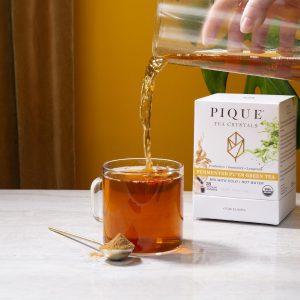
Pique Pu’er Green Tea
Unrivaled polyphenol concentration. The ultimate supertea for immune support and cellular health.
2. Ripened or Cooked Pu-erh Tea (Shou Cha)
Ripened pu’er tea, known as shou cha, is more mellow and has fewer tannins from the start. It also has those signature woodsy, earthy notes that define pu’er tea for some tea drinkers.
Compared to the raw version, ripe pu-erh is closer to a black tea in flavor. So coffee drinkers may prefer drinking this dark tea since it offers a similarly rich brew.
The primary polyphenols found in Shou cha are theaflavins. These are thought to help support heart health and digestion.
Here’s our favorite ripened pu’er tea:
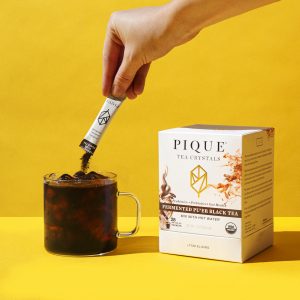
Pique Pu’er Black Tea
Fermented with probiotics. The ultimate supertea for gut health and digestion support.
So which pu’er tea is right for you? And how do you find the best pu-erh tea leaves?
How to Choose the Best Pu’er Tea
Because of the aging process that pu’er tea undergoes, it can have upwards of 390 fungal and 629 bacterial species on its leaves (1).
This shouldn’t deter you from trying this type of tea. However, it should stress the importance of finding good quality pu-er tea.
Knowing where your pu’er tea is sourced from is the first step to assessing its quality.
Look for organic and pesticide-free teas. And check to make sure that their processing doesn’t include the use of any harsh chemicals either.
The pu’er tea that you choose should be screened for toxins to ensure that nothing slips through the cracks and gets into your system – especially if you’re enjoying a cup on a daily basis!
When it comes to tasting and smelling your pu’er tea, dirt and fishy odors shouldn’t come to mind. If anything smells off, your tea could have already gone bad.
Sipping pu’er tea at this stage would negate the incredible health benefits and could leave you with unwanted side effects.
Speaking of the perks, here’s a quick recap of the potential health benefits of pu’erh tea:
- Helps promote healthy weight management and heart health
- Supports healthy skin
- May support healthy blood sugar
- Possible support for brain health (in rat studies)
The Best Pu-erh Teas From Around the World
Now that you know more about these two types of aged tea, it’s time to dive deeper into sourcing high-quality pu’er tea.
Today, the Yunnan province still holds the largest pu-erh source.
Within this region, the Jingmai and Bulang mountain ranges offer the perfect spot for growing tea trees. These ancient trees produce fresh, budding tea leaves.
From this point, many pu’er tea leaves are then processed in one of two prominent tea factories in China: the Xiaguan Tea Factory or the Menghai Tea Factory.
You can find this aged tea in loose-leaf form, but it’s more commonly found as a pu-erh tea cake or tea brick. Pu-erh cakes are just a compressed version of the leaves that are easier to travel and ship.
To brew this type of pu’er, you simply break off a chunk and run it through a hot water screening before steeping your cup of tea.
Pu’er tea crystals are also available, which are much more convenient for brewing a single cup instead of a whole teapot. The crystals instantly dissolve in hot water, so you’re ready to chill or head out the door quickly.
Final Thoughts on the Best Pu’er Teas
Which type of pu-erh tea do you think you’ll enjoy most? Whether you sip on ripe pu-erh tea or raw, you’ll score the potential for unique health benefits in each cup. So why choose between them when you can try both?
Each type of pu’er tea also boasts an entirely different flavor profile. Plus, the longer pu’er tea ages, the more complex flavor dimensions develop. No two cups of pu’er tea are ever the same, and that’s half the fun!
So in the same way you wouldn’t choose to only drink black tea, oolong, or green tea, you should keep your options open when it comes to pu’er tea.
And never settle for poor quality tea leaves.
Look for a good pu-erh tea company that practices safe and responsible harvesting. All high-quality pu-erh tea should be free of chemicals and pesticides. After all, you don’t want to negate all of the health benefits of fermented tea by consuming a cup loaded with additives or chemicals.
To discover what our pu-erh tea crystals taste like, visit this page now!
